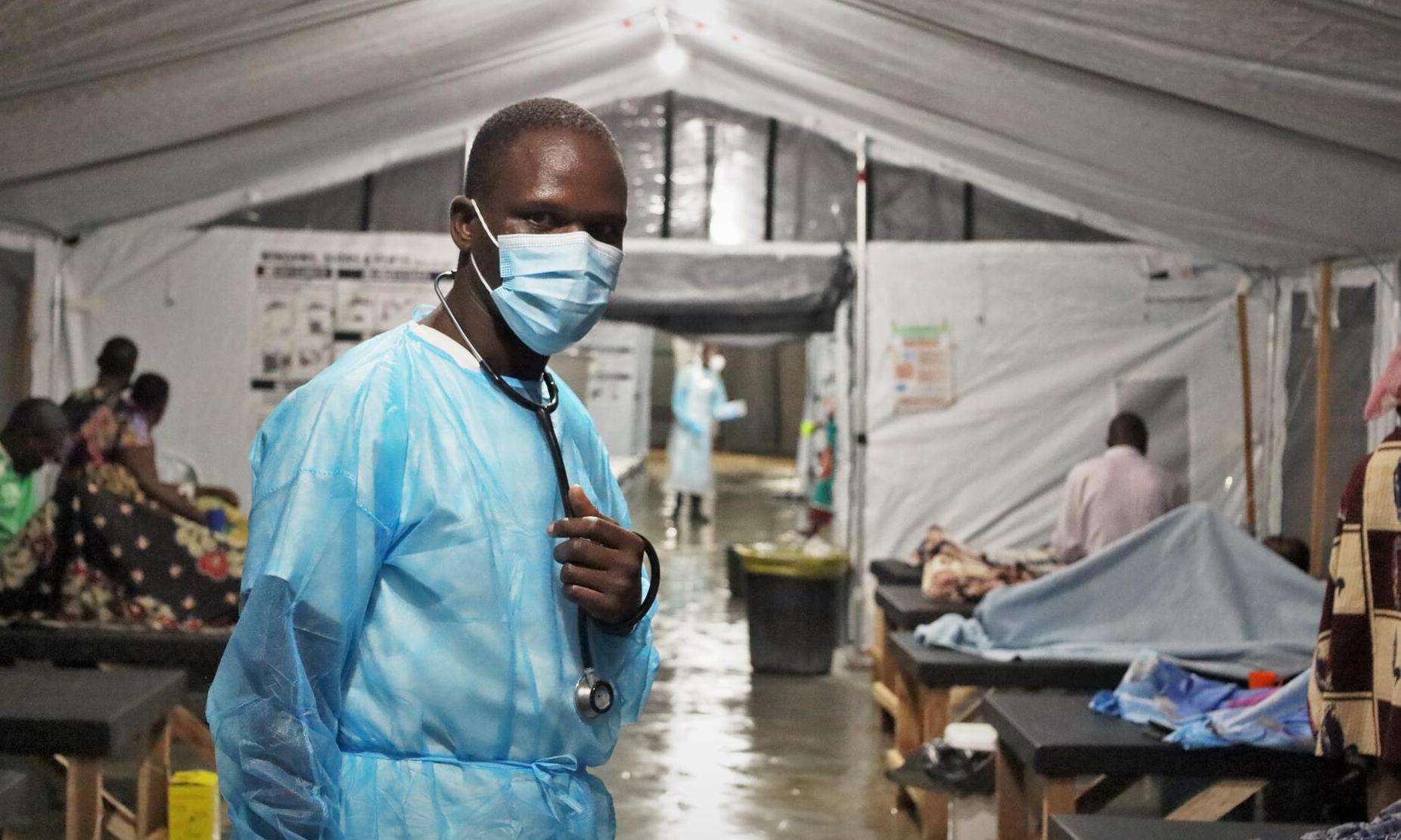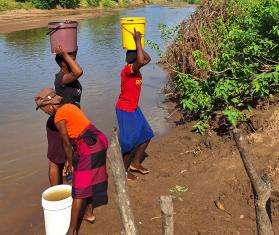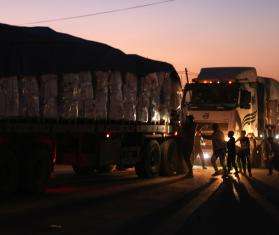Climate factors, conflict, and forced displacement have led to an unprecedented rise in global cholera cases while vaccine supplies run dangerously low. Here's what to know about cholera and how Doctors Without Borders/Médecins Sans Frontières (MSF) teams are responding to outbreaks around the world.
What is cholera?
Cholera is a preventable and curable disease that kills fast if left untreated. It is a highly contagious bacterial infection that causes cells lining the intestine to produce large amounts of fluid, resulting in diarrhea and vomiting. Without treatment, cholera can quickly lead to death by dehydration.
SYMPTOMS
Symptoms typically appear within 2-3 days of infection and vary widely, and in some cases people are asymptomatic. In severe cases, people have profuse watery diarrhea and vomiting, leading to dehydration and shock that can become fatal within hours if patients don't receive care.
SPREAD
Cholera is an extremely virulent disease that spreads when someone ingests food or water contaminated with vomit or feces from a person carrying the disease. Contaminated food or water supplies can rapidly cause massive outbreaks in communities.
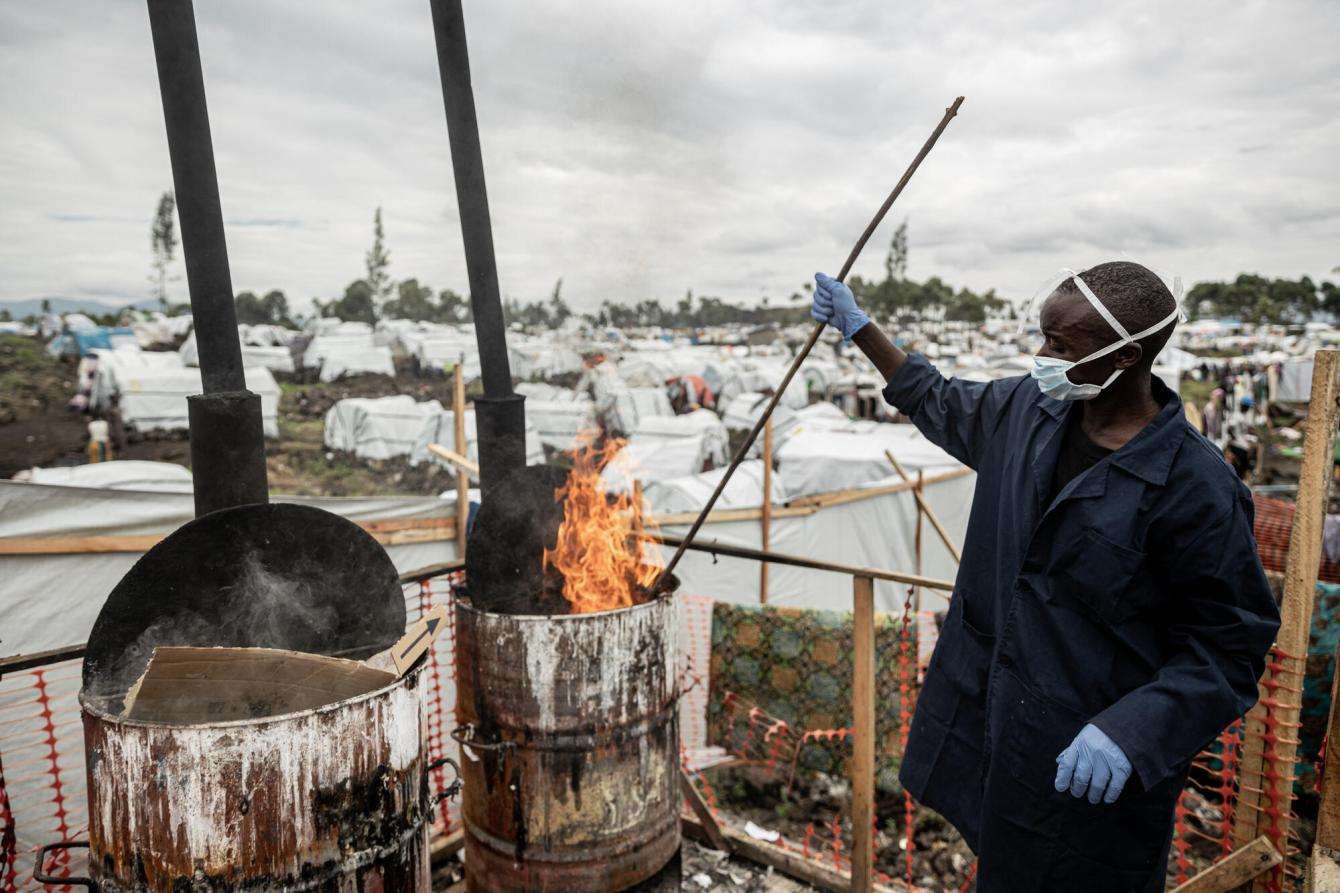
How is cholera treated?
Without treatment, cholera can kill within hours. But with proper care, the death rate drops to 1 percent or less. Very bluntly, no one should die of cholera in 2024. Treatment requires rehydration, including simple oral rehydration, and a course of antibiotics and intravenous fluids for people with more severe cases.
What causes cholera outbreaks?
LACK OF CLEAN WATER AND SANITATION
Cholera occurs in settings without clean water and proper sanitation—from remote villages to overcrowded cities, refugee camps, and conflict zones.
FLOODS AND DROUGHTS
Outbreaks can be driven by both too much water and too little water. Flooding can contaminate water supplies, helping the bacteria spread. When there are droughts, people don’t have access to their usual sources of water and resort to other sources of water, which may be unclean.
CONFLICT AND DISPLACEMENT
Conflict can disrupt people’s access to water and sanitation facilities, putting them at higher risk of becoming infected. Without access to safe water, displaced people are at a heightened risk of contracting cholera.
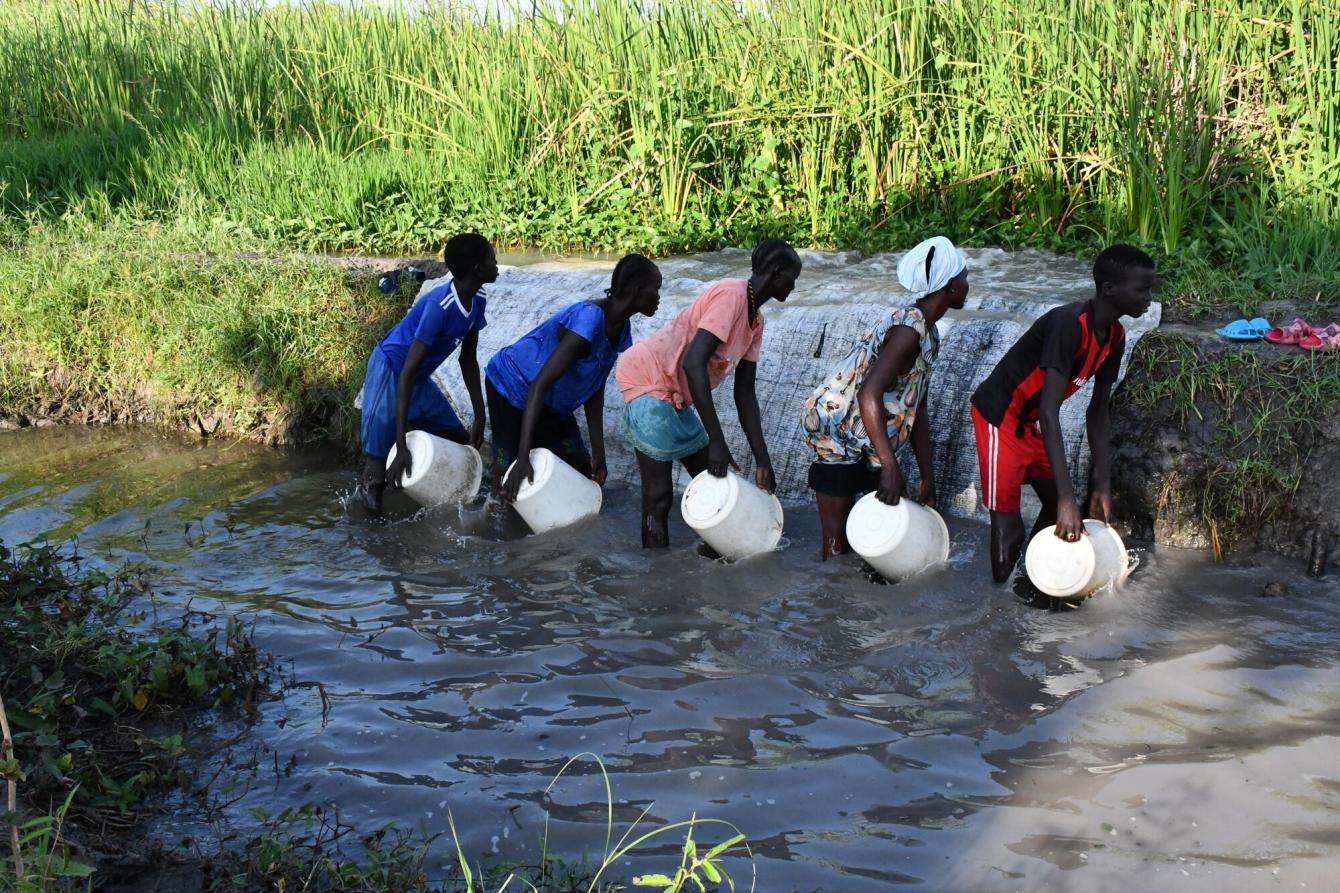
Why is cholera spreading now?
While the triggers for cholera outbreaks like displacement and conflict are not new, current conditions around the world are fomenting the spread.
CLIMATE CHANGE
Extreme weather events caused by the climate emergency like frequent droughts and floods, threaten to spur the spread of the disease by displacing communities, contaminating water supplies, or damaging water and sanitation infrastructure.
ECONOMIC AND POLITICAL CRISES
In some countries, economic challenges, lingering political crises, conflict, and population displacement can lead to the deterioration of water, sewage, and waste management infrastructure, which can also create the conditions for the spread of cholera.
ACCESS TO TESTING
In addition, access to timely testing and laboratory confirmation of cholera is not broadly available in many places. This lack of diagnostics can delay the declaration of an outbreak, which can in turn hamper a timely and effective response. Cholera is very contagious and can spread faster than a diagnosis can be made. More efforts are urgently needed to support early diagnosis at the first sign of symptoms.
In many of the places where Doctors Without Borders works, a combination of these factors are fueling outbreaks.
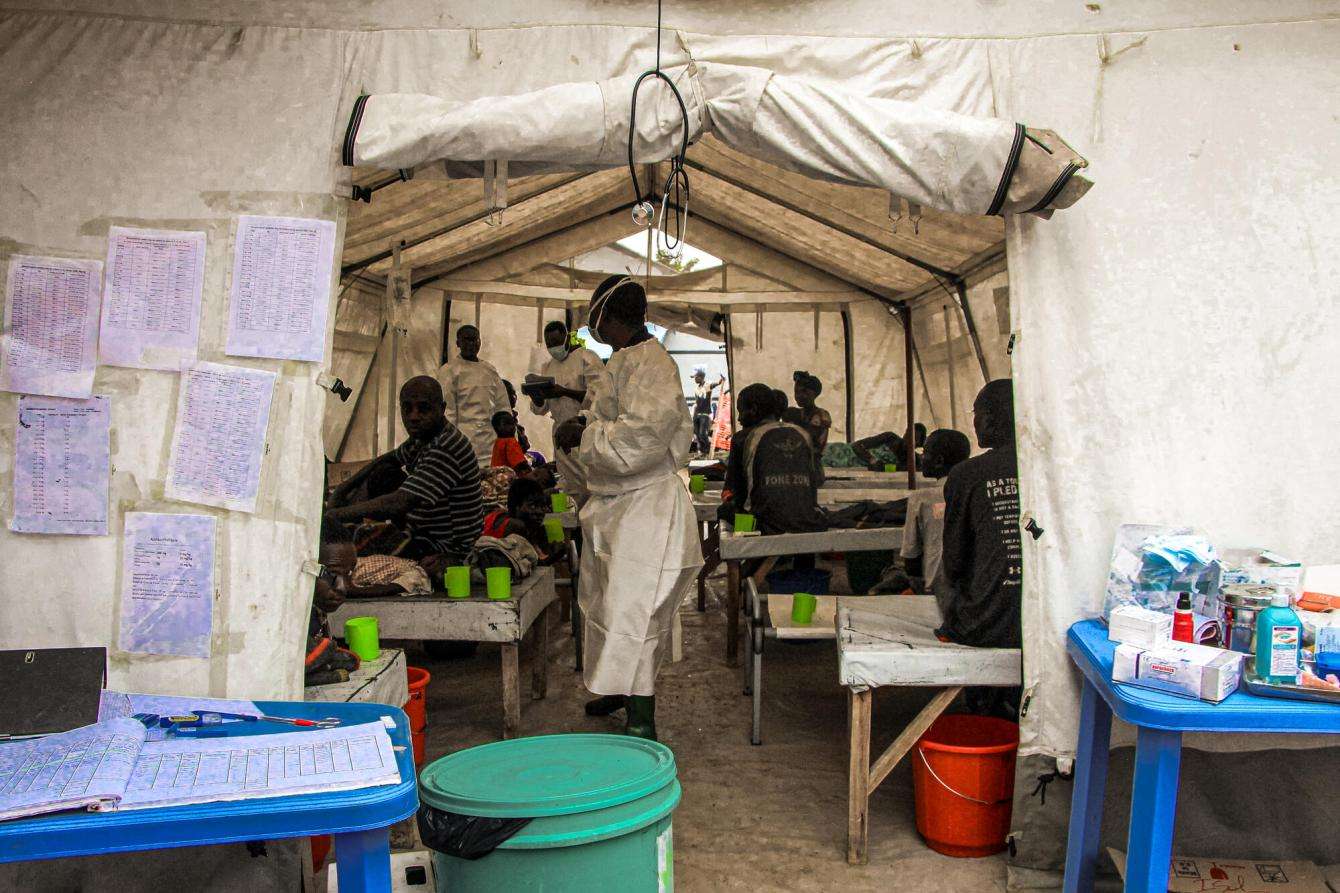
How does MSF respond to cholera outbreaks?
Here's how MSF responds to cholera outbreaks:
- Cholera treatment kits containing essential supplies help us hit the ground running once an outbreak is confirmed. Contents include rehydration salts, antibiotics, and supplies for intravenous therapy, along with buckets, boots, chlorine, and plastic sheeting.
- Outbreak investigation involving mapping where patients are coming from helps responders prioritize outreach and supports preventive measures and decentralized treatment in the most affected areas.
- Cholera treatment centers are set up at central locations with specialized isolation wards for rapidly treating large numbers of patients while preventing the spread of disease beyond the facility.
- Water and sanitation teams ensure people have access to sufficient latrines and clean water, with activities ranging from distributing soap, clean buckets, and water disinfection tablets for home use, to providing bucket chlorination at water sources before water is carried home.
- Community health promotion helps people implement measures to protect themselves against cholera and know what to do if they develop symptoms.
- Vaccinations are carried out both in response to cholera outbreaks and to prevent future ones.
- Advocacy focusing on the urgent need to expand global supplies of vaccines and to develop and confirm the effectiveness of simpler strategies for conducting mass vaccination campaigns.
- Research on ways to optimize strategies for using cholera vaccines and more efficient ways to conduct mass vaccination campaigns.
How is cholera prevented?
Access to clean water and sanitation, improved monitoring of the spread of disease, community engagement, and vaccination are key to preventing cholera outbreaks.
Vaccination
Vaccines are a powerful tool to help prevent cholera and contain outbreaks. One big advantage of the cholera vaccine is that it is oral, so it’s easy to administer—you simply drink it. However, there is currently a global shortage of the vaccine, so not enough people are receiving this lifesaving immunization. The shortage is due to soaring demand amid the extraordinary number of cholera outbreaks around the world and limited manufacturing capacity, with only one manufacturer of the vaccine left.
On April 12, 2024, the World Health Organization prequalified a new oral vaccine based on a simpler formulation that allows for rapid and increased production, which will hopefully improve supply.

Water and sanitation
Access to clean water and proper sanitation infrastructure and hygiene measures reduces the likelihood of cholera outbreaks. Drinking and using safe water, using clean latrines or toilets, washing hands with soap, and ensuring good food hygiene are all ways to avoid contracting the disease. But these simple measures are often out of reach for people in settings where cholera is common.
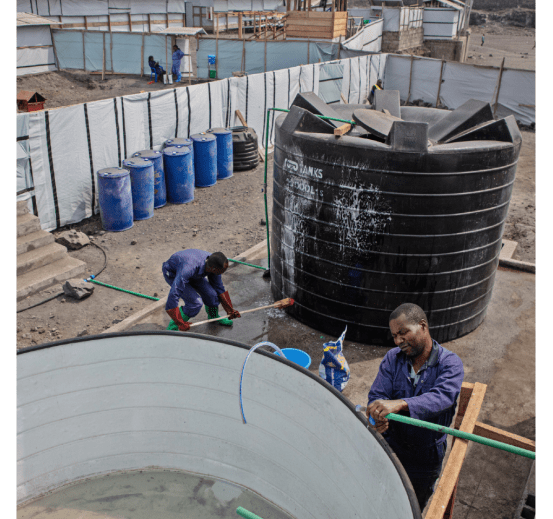
Community engagement
Prevention and control of the spread of cholera require measures at the community level, especially when it comes to making communally supplied water safe for drinking. Engaging people in communities on hygiene measures, using soap, waste management, and avoiding contamination of water sources—in addition to putting communities in charge of maintaining water points—all contribute to more effective outbreak control.

Where are cholera outbreaks happening?
Currently, 16 countries around the world have declared an active cholera outbreak, with many reporting large and prolonged outbreaks. Rates of cholera are increasing in southern Africa. Early data shows the number of cholera cases in 2023 rose by 40 percent and deaths increased by over 80 percent compared to the previous year. In the first month of 2024 alone, nearly 41,000 cases and 775 deaths were reported.
- Zimbabwe recorded the first cholera case of a current wave in February 2023. Since then there have been 24,885 cases and more than 500 deaths, as of February 2024.
- Mozambique, one of the countries most impacted by climate change, has recorded about 3,000 cases and 12 deaths as of January this year in Nampula province, the country’s hardest-hit region.
- Zambia is battling its largest cholera outbreak ever and has seen a dramatic increase in cases since mid-December 2023. As of February 22, Zambia has recorded over 19,000 cases and almost 700 deaths.
- Yemen continues to face the world's largest cholera epidemic since modern record-keeping began in 1949. Amid ongoing full-scale war that caused the country's infrastructure and health care system to collapse, over 2 million people in Yemen have suffered from cholera since the outbreak's start in 2016.
